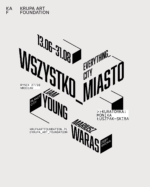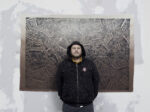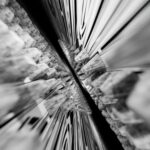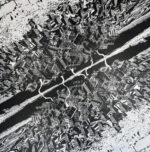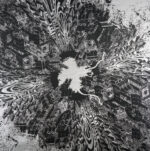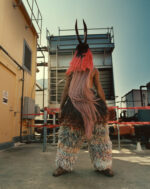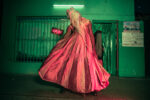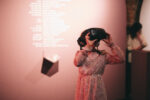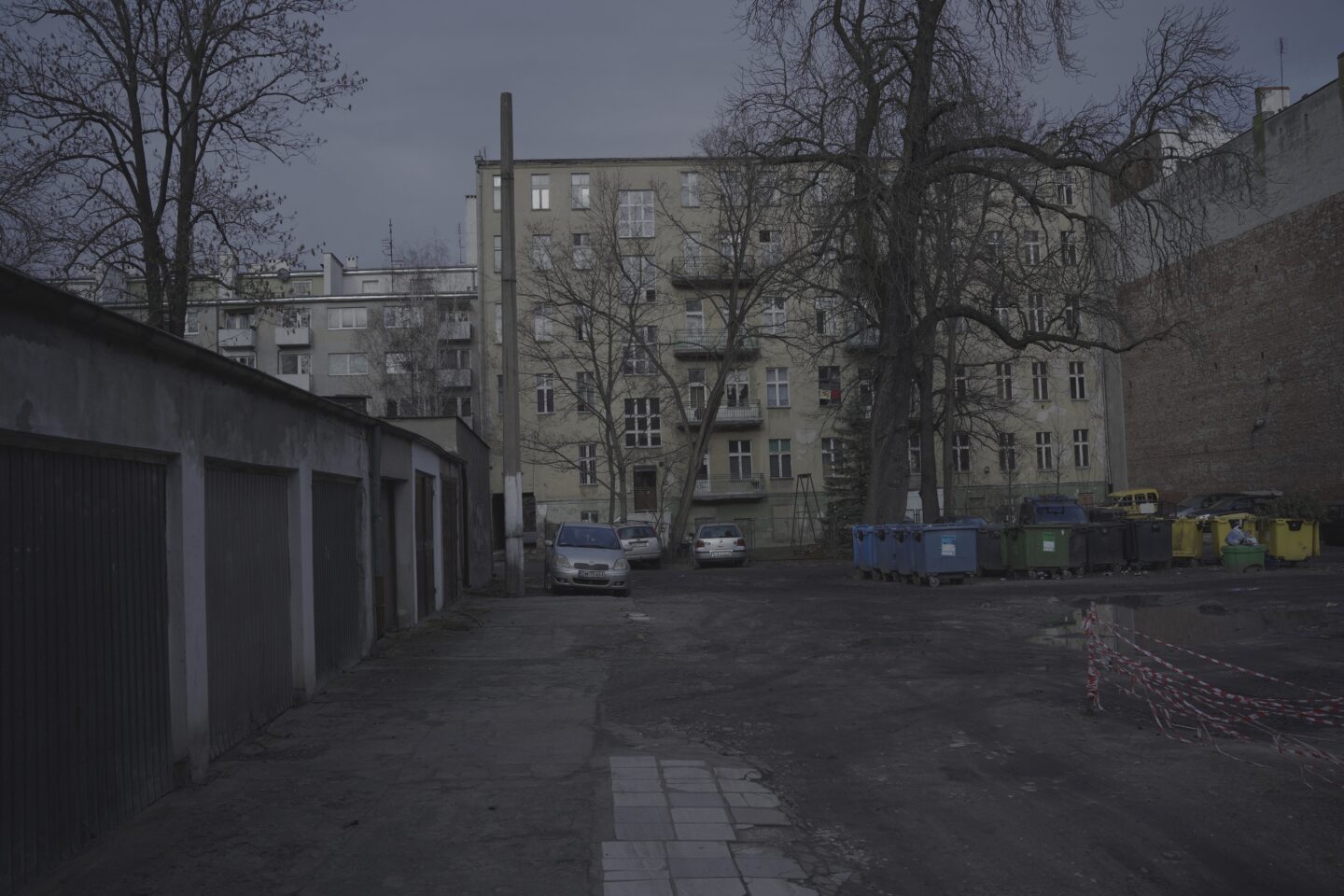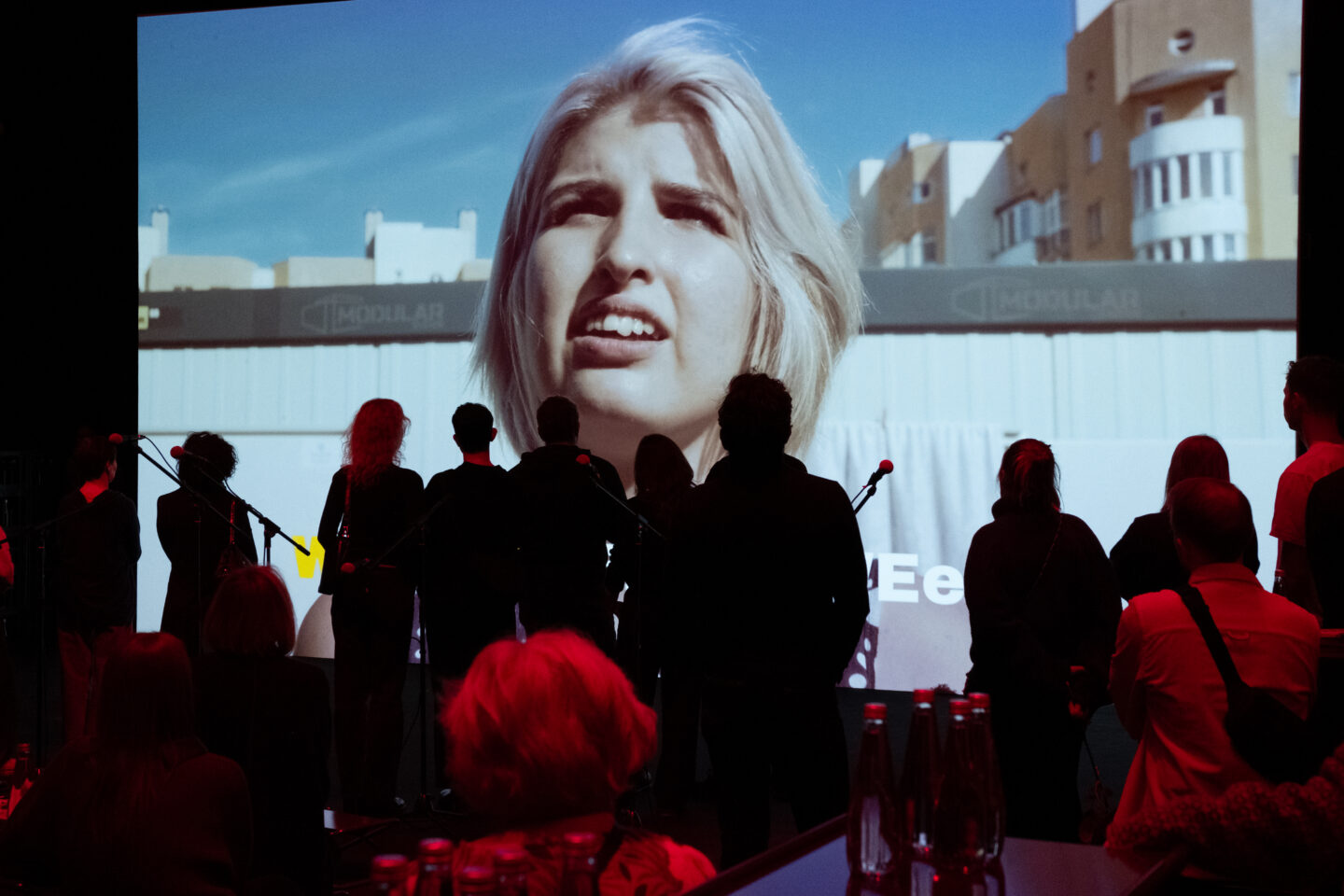Program
KAF
13.06–05.10.2025
Maybe the world, without us,
is the real poem.
Mary Oliver*
The contemporary Metropolis. Mass. Machine – a hundred years on and viewed from the perspective of humanity on the brink of annihilation. The city, indeed, has changed everything.
Buy tickets online or in the Gallery
This exhibition juxtaposes two expansive, post-industrial and post-punk total projects: Planet City by Liam Young and Dragon’s Teeth by Mariusz Waras. Both artists employ the city as metaphor and medium of their work, yet with very different starting points and ends. Both share a deep commitment to the practice of world-building – the creation of internally coherent, fictional realities. For Young, this grew out of architecture and film; for Waras, from computer games, street art, and the demoscene. Finally, both engage in complex media hybridity: Planet City unfolds across film, objects, publication, and virtual reality; Dragon’s Teeth is as an immersive audiovisual installation accompanied by paintings.
Planet City is a speculative, critical narrative envisioning a hyper-dense metropolis in which all of humanity is relocated, freeing the remainder of the Earth to regenerate. This radical solution echoes Edward O. Wilson’s earlier proposal of leaving 50% of the Earth’s land mass to nature, expressed in his Half-Earth: Our Planet’s Fight for Life. In Young’s vision, however, 10 billion people inhabit a single urban organism occupying merely 0.02% of the planet’s surface. He counts on the Earth’s self-healing capacities, as described by Alan Weisman in The World Without Us: “On the day after humans disappear, nature takes over and immediately begins cleaning house – our houses, that is. Cleans the right off the face of the earth. They all go”**. Many structures would not survive more than 10–15 years; entire cities, not even a century. Against this backdrop, Planet City is presented as a metropolis that rescues everything – a place where everybody lives, where everything has been built anew, pulsating in perpetual celebration: 365 days a year of parades, festivals, cultural polyphony.
Waras’ urban imago mundi, by contrast, is devoid of human presence. Instead, there is mechanistic urban sprawl – a dynamic and overproductive city-machine where architecture replicates itself in relentless configurations. Here, space is marked by violence, surveillance, and control. Waras’ architecture is monument to conflict, bearing the scars of past wars, grappling with present ones, and fortifying itself against future crises. The title Dragon’s Teeth invokes the founding myth of Cadmus, who sows the monster’s teeth and reaps warriors. Only five, survivors of fratricide, go on to found Thebes. Waras’s looped installation mirrors this cyclical repletion of myth and history.
Everything_City presents a vision that is at once utopian and dystopian, addressing the scale of destruction, the climate crisis, ethical collapse, the stagnation of the Anthropocene, our collective helplessness in the face of planetary challenges, and the limits of both moderation and excess. It explores the city as both an instrument of domination and a potential agent of transformation, considered through the lens of distributed responsibility and agency among humans, technology, and the natural world.
Liam Young contends that in this “moment without a future” – or “threshold of no return” – we must allow ourselves to imagine and articulate aspirational narratives. Within the Polish discourse on the twilight of the human epoch, a comparable appeal arises in the works of Ewa Bińczyk and Ewa Domańska. Bińczyk closes her Epoka człowieka. Retoryka i marazm antropocenu (The Age of Man: Rhetoric and Stagnation of the Anthropocene)*** with a meditation on the necessity of envisioning futures “against the times,” learning to engage with the unimaginable, and creating utopias as strategies of protection and resistance.
Media Partners: Radio RAM, Radio Wrocław, Radio Wrocław Kultura
* Mary Oliver, Devotions: The Selected Poems of Mary Oliver, New York, 2017, p. 234.
** Alan Weisman, The World Without Us, New York, 2007, p. 25.
*** Cf. Ewa Bińczyk, Epoka człowieka. Retoryka i marazm antropocenu, Warsaw, 2018, p. 280.
MARIUSZ WARAS
Mariusz Waras – PhD with habilitation, professor at the Academy of Fine Arts in Gdańsk, where he runs the Street Art Studio. A multidisciplinary artist: street artist, painter, graphic designer, creator of spatial and multimedia installations, curator, and cultural animator.
He gained international recognition through the M-city project, within which he has created several hundred murals around the world. His works are distinguished by a signature industrial aesthetic and a modular compositional system. His practice focuses on urban issues, highlighting their processual and relational nature, as well as the social dimension of art.
He continually develops his artistic language, adapting it to digital media. He employs advanced graphic tools, artificial intelligence, and AR/VR technologies to create spatial graphics, animations, and interactive environments. Since 2018, he has served as the curator of the Dictador Art Masters festival in Colombia, which brings together leading figures in street art and contemporary visual culture.
LIAM YOUNG
Liam Young is a designer, director and BAFTA nominated producer who operates in the spaces between design, fiction and futures.As a worldbuilder he visualizes the cities, spaces and props of our imaginary futures for the film and television industry and with his own films he has premiered with platforms ranging from Channel 4, Apple+, SxSW, Tribeca, the New York Metropolitan Museum, The Royal Academy, Venice Biennale, the BBC and the Guardian. His films have been collected internationally by museums such as the New York Met, Art Institute of Chicago, the Victoria and Albert Museum, the National Gallery of Victoria and many more. He has published several books including the recent Machine Landscapes: Architectures of the Post Anthropocene and Planet City, a story of a fictional city for the entire population of the earth.
Accompanying events:
- Saturday, October 4, 2025, 5:00 PM | Artist–curator tour of the exhibition Wszystko_Miasto / Everything_City with Mariusz Waras and Monika Łuszczpak–Skiba | closing weekend
- Join us every Friday at 6 PM for a guided tour in English – included in your gallery ticket.


